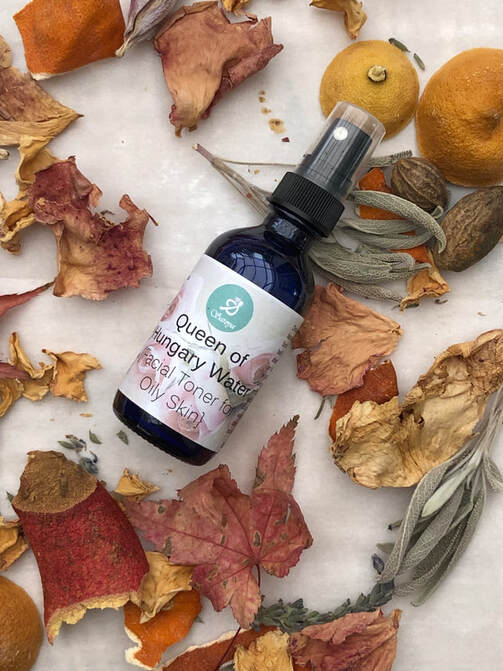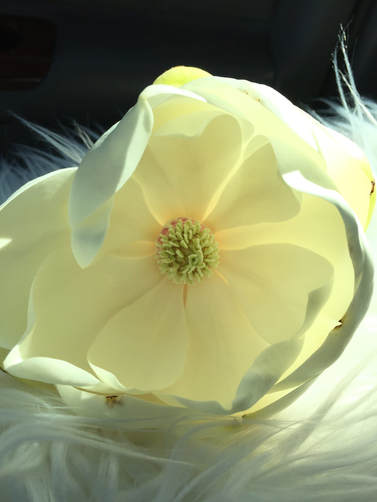|
Roses are abloom where I live (northern California). A friend asked me to share beauty recipes using roses - so here goes. But first, a quick introduction. Ever since the world changed with the spread of Covid 19 and we were asked to shelter in place, I started a self study of Ayurveda. I discovered the ancient texts of Charaka and Vagabhatta - the Charaka Samhita and Ashtanga Hridayam. Once I started reading these texts as well as numerous papers published by Indian academic institutions on the science of Ayurveda, I was completely blown away by the simplicity and consistency of this approach. I cannot go back to my old way of doing skin care.
According to Ayurveda, every substance in the universe can be used as medicine provided you know what you're doing and how to use it. Every substance has certain properties which should be understood so that the maximum benefits are derived from it. So before we talk about how to use rose, we need to understand what to use it for. Rose is Bitter, Astringent, and Sweet in taste. It has Light and Slimy properties. It is Cold in potency. Therefore, in Ayurveda, rose is used to soothe Pitta dosha and any disorders due to this dosha,. Rose is especially good if you have sensitive skin that tends to get inflamed easily. You can use rose externally as well as internally; use it fresh or dried. But first things first:
The best way to use roses for skin care is via face masks. Use fresh or dried rose petals to make these masks.
Or drink a rose tea. To make rose tea, pour just boiling water on 3-4 dried rose petals. Let it steep for 2-3 minutes and drink the tea. Rose is good for the heart and balances Sadhaka Pitta - a sub-dosha of Pitta that influences emotions. . You can consider making a nervine tea by making a tea of rose, chamomile, and lemon balm. This combination is calming to the mind and helps the nervous system. Drink a cup before going to bed to set a calming ritual. I hope you find these recipes useful. Comment down if you plan to try any and how they worked out for you!
0 Comments
Every so often, I get questions from clients on skincare. Here's an interesting one from my sister: “Should I be using a toner?” Read on to find out.
There are multiple categories of skin care products: cleanser, toner, essence, serum, moisturizer, mask … what else am I missing? The function of cleansers and moisturizers are the easiest to understand. Cleansers remove dirt and oil from your skin. Moisturizers add hydration (or moisture) to your skin. Toners fall into a grey zone in terms of functionality. Some define the function as cleansing of your skin pores. Some define the function as adding more hydration or other additives. Hyaluronic acid and vegetable glycerin are examples of humectants that help with extra hydration while vitamins are other beneficial additives that can be added. A toner, essence, water, or serum can all provide similar functionality. They are typically used after cleansing and before applying moisturizer and are watery in consistency. Some toners have alcohol in them. These are sometimes labeled as astringent toners. They are marketed as products that "tighten pores". Technically, pores do not open, close, or tighten. What happens is that the skin around the pores tightens because of dryness (alcohol is very drying) giving you the impression that your pores are tighter. Coming back to the question “Should I use a toner?” - below are three reasons to use one
I personally use real soap to cleanse my body and sometimes my face. The reason is because I made a choice to eliminate plastic from my skin care regimen as much as possible. (Saroya offers a solid shampoo bar that is neutral in pH that can double as body soap, but I prefer real soap because it can be made from scratch from plant oils.) The pH of the soap I make is around 8 so I use an acidic toner immediately after to neutralize the alkalinity.
This toner from Keihl’s has calendula and burdock botanical extracts meant to soothe sensitive skin. This toner from Neutrogena is just water and butylene glycol and not terribly useful in my opinion. Other than a humectant and panthenol, it has no other nourishing ingredients. Some toners contain witch hazel, a bark with astringent properties, that constricts skin and gives the feeling of tightening pores. It is debatable if astringents do any good. However, witch hazel extract contains other beneficial skin nutrients such as polyphenols which are antioxidants. But beware of commercial products containing witch hazel as they can contain significant amounts of alcohol which is extra drying. In conclusion, consider a toner if you would like to get some new functionality that you aren’t getting from your regular routine. Do not simply pick a product based on the cover - read the ingredients and understand what they can do for you! I have never been into makeup. I know it's quite exciting for a lot of women, but for me it's just a bother. Why?
To illustrate what makes me feel gorgeous, I need to make an analogy to Ramit Sethi's pyramid for productivity (with due apologies to Ramit). When you think about it, there are a few key fundamentals which when taken care of pay huge dividends when it comes to the quality of your life. Beauty is an aspect of quality of life - it adds to self confidence. So, here are the fundamentals Ramit talks about that are the basics of leading a productive life. Interestingly, the same is true for looking gorgeous as well. (Below is my summary and not exactly Ramit's words).
|
|
|
© Saroya Natural 2023 | All rights reserved.
Website designed by Aadi M |
Contact Us |




 RSS Feed
RSS Feed